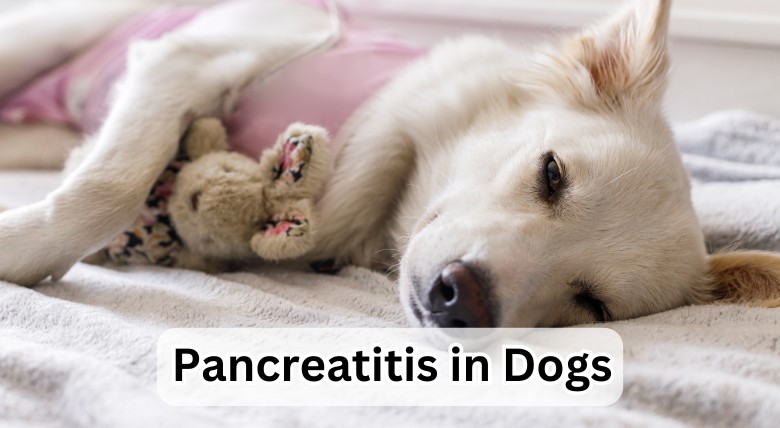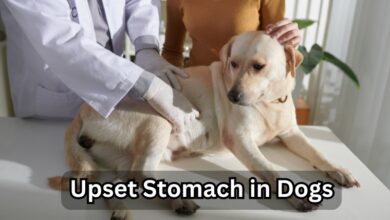Top 12 Tips for Preventing Pancreatitis in Dogs

Table of Contents
Pancreatitis in Dogs is a severe disease caused by pancreas inflammation. The pancreas is actually a small gland that has various functions, one of which is to control digestion and insulin.
However, if not well controlled, pancreatitis may cause uncomfortable and sometimes lethal consequences.
No matter if you are a beginner in pet ownership or you have long experience as a dog parent, it is important to know about the symptoms of dog pancreatitis and how to avoid getting your paw friend ill from the disease.
Below are some common factors that can lead to pancreatitis in dogs and some preventive tips for your dog’s care.
What is Pancreatitis in Dogs?
The term pancreatitis in dogs occurs when inflammation of the pancreas triggers the activation of digestive enzymes earlier than it is meant in dogs. However, the organs do not simply secrete these enzymes as would be the case in the intestinal tract, rather these enzymes are rather eroded in the pancreas itself.
This leads your dog to a very painful and discomfort condition and it can be long-lasting.
Common Pancreatitis Symptoms in Dogs:
- Abdominal pain
- Loss of appetite
- Vomiting
- Diarrhea
- Lethargy
- Fever
| Did you know? While any dog might be affected, some breeds are more genetically prone to the condition; miniature schnauzers and Yorkshire terriers are at higher risk for developing canine pancreatitis. |
What Causes Pancreatitis in Dogs?
Pancreatitis in canines is developed due to some common causes. These common factors are curable.
- High-fat diets
If you provide high-fat diets, it might develop pancreatitis as well as obesity in dogs . It is one of the major causes.
- Obesity
Obese dogs are more prone to getting complications due to the high level of cholesterol.
- Medications
Medicines like steroids might develop pancreatitis, so always use medicines that your veterinarian recommends.
- Trauma
Any physical harm that affects the mechanism of the organ or its neighboring structures will impact your dog’s pancreatic system.
- Other diseases
Such diseases as diabetes or hypothyroidism may also predispose a dog.
| Do You Know?A single fatty meal, such as table scraps, can trigger pancreatitis in dogs, particularly in breeds prone to the condition. |
12 Tips for Preventing Pancreatitis in Dogs
The best time to prevent pancreatitis in dogs is when the right diet, amount of activity, and choices about health come into play.
Here are 12 practical tips to help you keep your dog’s pancreas healthy and avoid complications.
1. Avoid Feeding High-Fat Foods
The number one reason behind dogs’ pancreatitis is the diet rich in fat content.
Check the fat content of your canine’s diet, and do not feed raw vegetables or scraps from your dining table, especially foods with fats such as:
- Bacon
- Sausages
- Fried meats
2. Maintain a Healthy Weight
The main risk factor for the occurrence of pancreatitis in dogs is being overweight or obese. Feed your dog with a balanced diet to achieve the right weight and adequate exercise to avoid pancreatitis.
3. Feed a Balanced Diet
The leading cause of pancreatitis is obesity, and feeding your dog a well-balanced diet suitable for them significantly decreases the chance of getting this disease.
Choose foods the veterinarian recommends that are low-fat and contain all the necessary nutrients.
4. Regular Exercise
Like any other living creature, a dog’s physiology demands routine exercise to maintain their body weight.
Playing, jogging, and stimulating the dog’s brain each day will also decrease the chances of getting pancreatitis in dogs.
5. Avoid Unnecessary Medications
Corticosteroids are other medicines that may be associated with the occurrence of pancreatitis canine.
Do not feed your dog any other drug apart from the prescribed one, and consult the vet on the side effects of the drugs.
| Risk Factor | How to Prevent it |
| High-fat diet | Choose low-dog food |
| Obesity | Maintain a regular exercise routine |
| Medications | Consult your vet before use |
| Sudden diet changes | Transition to new foods gradually |
| Genetic | Regular vet check-ups |
6. Gradual Dietary Changes
Whenever you desire to alter your dog’s diet in any way, it is necessary to do this gradually, mainly if it takes ten days.
They may cause gastric upset and lead to pancreatitis and, therefore, should be avoided.
7. Monitor Treat Intake
Try not to offer your dog treats, as most of these treats contain fats and calories. Feed your dog only vet-recommended, low-fat snacks, and do not provide snacks between meals.
8. Regular Vet Check-ups
Owners should take their dogs to the veterinarian for routine checkups. This can help find the initial stages of pancreatitis or any other illnesses that may lead to the condition.
A veterinarian’s consultation is also required so that you get the proper feeding and exercise plan for your pet.
9. Use Digestive Enzymes (If Recommended by Your Vet)
Depending on the condition, if your dog shows all major symptoms of pancreatitis, your veterinarian may recommend using digestive enzymes.
10. Control Portion Sizes
Overfeeding is risky and may lead to obesity and pancreatitis in dogs. Use the indicated measures depending on your dog’s size, breed, and activity level.
It is also essential not to satisfy the demanding dog with more servings than recommended, even if the dog is demanding it.
11. Keep Your Dog Hydrated
Dehydration can also worsen the condition of your dog in pancreatitis. Ensure your dog’s water needs are fulfilled, especially after eating food and in summer.
12. Be Cautious with Human Food
Unlike human foods, dog foods could be too rich and fatty for digestion. Do not feed your dog scraps or “people’s food” off your plate.
There are many human foods toxic to dogs, which include:
- Onions
- Garlic
- Chocolates
- Grapes
- And other related products.
How to Treat Pancreatitis in Dogs
Upon noticing pancreatitis symptoms in dogs, it is a good time to call your vet.
Acute pancreatitis has no cure. If it is well managed early, complications can be prevented, and symptoms can be reversed.
Treatment Options Include:
- Intravenous fluids
It is usedto prevent dehydration and support organ function.
- Pain management
Your vet recommends medications to ease discomfort.
- Dietary changes
A diet with low levels of easily digestible fat can help reduce the stress on the pancreas.
- Rest: Ensuring your dog gets plenty of rest to recover.
In more complex cases, the treatment may require hospitalization.
Canine Pancreatitis Treatment Costs:
The case prices for each canine pancreatitis may differ according to the severity level. The mild type may only require a change of diet and some medications.
In severe conditions, you may need to admit your pet patient to a vet hospital. There, the veterinarian will do a series of tests and treatments, including long-term care, resulting in higher costs.
| Symptoms | Treatments |
| Vomiting, diarrhea | IV fluids, anti-nausea medication |
| Abdominal pain | Pain relief medications |
| Loss of appetite | low-fat diet prescribed by a vet |
| Dehydration | Hydration via intravenous fluids |
To Conclude!
All this was how to treat pancreatitis in dogs. It’s not an unpreventable condition; pet owners need to make the right decisions regarding the feed, activity, and health of the pet.
With the above-given 12 tips, you can reduce the probability of your pet getting pancreatitis. Early signs of dog pancreatitis and getting this complication diagnosed as soon as possible are critical for proper treatment.
If you need professional advice, use Search a Vet to connect with qualified veterinarians in your area. The experts available on this platform can assist you in taking the right steps to care for your pet and treat dogs with pancreatitis or any other condition.
FAQs
What food triggers pancreatitis in dogs?
The following foods are not good for dogs with pancreatitis.
- French fries, potato chips
- Margarine, butter
- Sugary drinks
- Full-fat dairy
- Mayonnaise
- Organ meat
- Red meat
- Pastries
Is pancreatitis fatal in older dogs?
Indeed, pancreatitis is a lethal disease in dogs, but, of course, the overall outlook depends on the invasiveness of the disease and the pet’s reaction to the medications.



